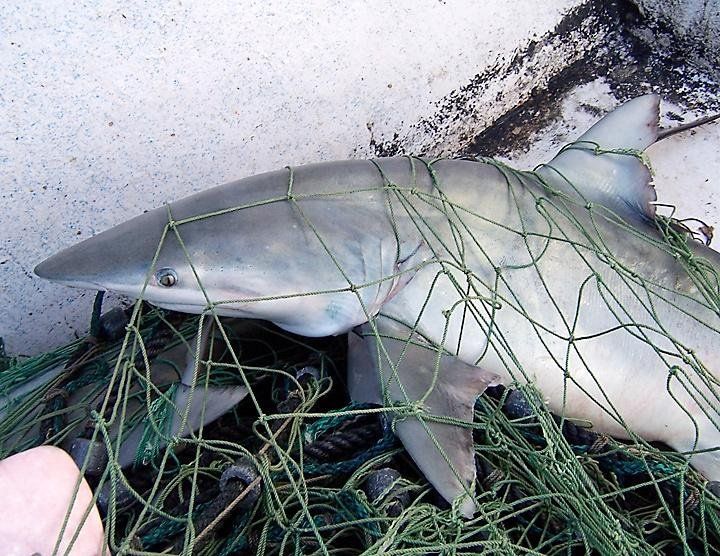A Turn in the Tide for Sharks and Their Public Image
Nearly 40 years after Jaws gave sharks a bad rap, the fish are the ones that need saving, not the beachgoers
/https://tf-cmsv2-smithsonianmag-media.s3.amazonaws.com/filer/20130621012205shark-thumb.jpg)
Sharks have it tougher than most when it comes to public relations. Unlike a number of disgraced celebrities, politicians and athletes who’ve somewhat managed to come out on the other side of a scandal, the marine creatures haven’t been able to shake their bad reputation for 38 years. What’s more, they probably didn’t even deserve it in the first place.
Stephen Spielberg’s Jaws, which premiered this week in 1975, was adapted from a 1974 novel of the same name. The book was inspired by real-life events, a series of shark attacks along the Jersey Shore in July 1916 that killed four people. The type of shark behind the attacks was never confirmed, but Spielberg picked the prime suspect to be his villain: the great white shark. However, the movie has allowed viewers to paint all kinds of sharks as massive, bloodthirsty killers with a taste for revenge.
That’s about 440 species of sharks. Talk about one fish (unknowingly) ruining it for the rest of them.
Here’s the thing: most of these sharks don’t have a taste for human blood—they don’t express special interest in mammal blood as opposed to fish blood. Diets vary across the many species around the globe, but they usually include other fish, crustaceans and marine mammals such as seals. The biggest species, the whale shark (which can reach up to 60 feet in length) only feeds on plankton.
And those supposed voracious appetites that in movies give them unnatural speed? Most of the time, sharks are just not hungry. While they can reach up to 30 miles per hour or more in sudden bursts, they tend to cruise at a lackadaisical pace of about five miles per hour. And sharks that swim with their mouths open aren’t always in attack mode—they open wide to ventilate their gills.
Not all sharks are big enough to ram into and capsize unsuspecting boats, either. About 80 percent of all shark species grow to be less than five feet long. Only 32 species have been documented in attacks with humans, the repeat players being the great white, tiger and bull sharks. Your lifetime risk of suffering an attack from one of these predators is pretty small: 1 in about 3,700,000. Compare that to your odds of dying in a car accident (1 in 84), a fall (1 in 218), a lightning strike (1 in 79,746) or fireworks (1 in 340,733). Yet many people have an irrational fear of sharks, born from movies like Jaws.
Today, an emerging public relations campaign is underway to show that sharks aren’t the bad guys anymore—they’re the victims. According to the International Union for Conservation of Nature, 30 percent of open-ocean sharks and stingrays, their fellow sea dwellers, face extinction. True, 12 people are killed by sharks each year worldwide. However, 11,417 sharks are killed every hour by humans, adding up to roughly 100 million a year. Some of these deaths are intentional: sharks are often hunted for their fins to make soup or caught for sport, their toothy jaws kept as trophies. Others fall prey to recreational fishing or nets meant to protect humans. Still others die because their habitats are slowly disappearing due to human activity, which reduces their food supply and pollutes the water pumping through their gills.

The numbers are stark: In some parts of the world, the scalloped hammerhead shark population has shrunk by 99 percent in the last 30 years. In tropical Atlantic waters, the population of silky sharks is now half of what it was in he early 1970s. The Pacific’s whitetip shark population fell by 93 percent between 1995 and 2010.
This spring, an international organization implemented a ban on international trade in the whitetip, the porbeagle and three species of hammerhead sharks. The Shark Conservation Act, signed into law by President Barack Obama in 2011, closed loopholes in existing shark conservation legislation and promoted U.S.-led protection efforts worldwide. Even Discovery Channel’s Shark Week, which for a quarter of a century has hooked viewers with the promise of a fear-filled thrill ride, is partnering with conservationists to help boost sharks’ public image.
But perhaps the biggest shift in the Jaws-dominated shark culture is this: some survivors of shark attacks are actually teaming up to save the creatures that once nearly killed them. As shark attack survivor Debbie Salamone explains on their PEW Charitable Trust website, “If a group like us can see the value in saving sharks, shouldn’t everyone?”
/https://tf-cmsv2-smithsonianmag-media.s3.amazonaws.com/accounts/headshot/marina-koren-240.jpg)
/https://tf-cmsv2-smithsonianmag-media.s3.amazonaws.com/accounts/headshot/marina-koren-240.jpg)